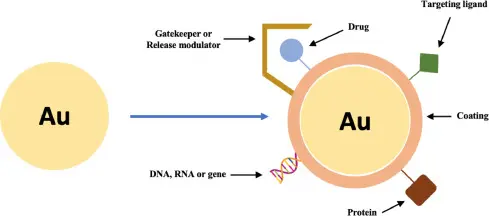What Is Nanoscience?
Nanoscience focuses on materials and devices designed at the nanometer scale (1–100 nm), where physical and chemical properties behave in unique ways. In cancer research, this science enables the creation of nanocarriers ultra-small particles capable of navigating the body to deliver drugs or detect disease. These nanostructures are smaller than blood cells and can access tumors that are otherwise difficult to reach using conventional therapies. Our work focuses on applying this precision to improve early diagnosis and targeted treatment.
Why Size Matters in Cancer Treatment
Tumor tissues often have leaky blood vessels and a poor lymphatic system, a phenomenon known as the Enhanced Permeability and Retention (EPR) effect. Nanoparticles can exploit this feature by accumulating more in tumors than in healthy tissues. For example, a 50-nanometer particle can easily pass through tumor vasculature and remain there long enough to release its drug payload. This size-driven advantage is a cornerstone of why nanomedicine is so promising in oncology
Enhanced permeability and retention (EPR) effect and passive targeting
Gold Nanoparticles & Smart Delivery
Gold nanoparticles (AuNPs) are especially promising because they’re easy to synthesize, chemically stable, and safe in biological systems. In our team’s research, we explore functionalizing AuNPs with ligands that recognise tumor-specific markers like folate receptors or HER2 proteins ensuring they bind only to cancer cells. Some systems are engineered to release their drugs only in the acidic environment of a tumor, avoiding healthy cells entirely. This “smart” behavior enables us to combine therapy and imaging in one platform.
Gold nanoparticles functionalization with different kind of ligands.
Advantages Over Traditional Chemotherapy
Traditional chemotherapy drugs like doxorubicin or cisplatin affect both healthy and cancerous cells, leading to harsh side effects such as nausea, hair loss, and immune suppression. Nanocarriers, by contrast, can encapsulate these drugs and release them selectively in the tumor microenvironment, significantly reducing off-target toxicity. For example, liposomal doxorubicin (Doxil) is already in clinical use, showing how nanomedicine can soften chemotherapy’s impact while maintaining efficacy
Current Research & Clinical Trials
Numerous clinical trials are testing nanoparticle-based systems for breast, lung, prostate, and pancreatic cancers. The BIND-014 platform (a nanoparticle-based docetaxel) showed improved tumor accumulation and reduced side effects in early trials. Researchers at MIT, Stanford, and other institutions are now developing gold nanorods and polymeric nanoparticles to combine drug delivery with photothermal therapy. These real-world efforts inspire us to push the boundaries of how nanomedicine can transform standard cancer care.

